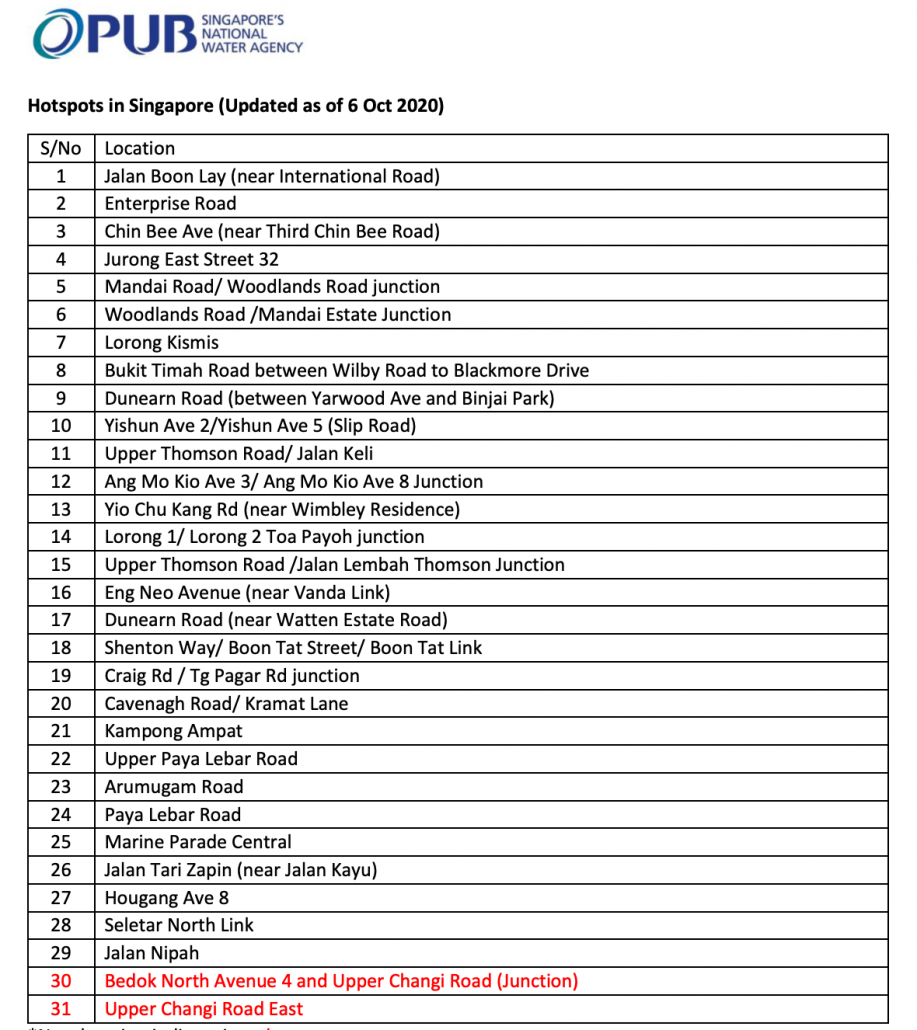For those suffering from travel bug bites and sighing at the inability to travel to Norway or Japan to catch snow during the Winter season, the weather here in Singapore has not disappointed much in the first two weeks of 2021. With temperatures reaching an all-time low of about 21.4℃ due to heavy torrential rainfall, making it the perfect weather to snooze and stay in bed.
Most of us will enjoy grabbing a cup of hot chocolate and tucking into warm sheets but there is also an unpleasant element to these heavy rainfalls – flash floods. While Singapore has undertaken massive drainage widening works and adopted several channel management strategies to manage floods in the metropolitan upstate city, we call home, some housing estates still suffer from the forces of Mother Nature. Read on to find out which are these flood-prone areas and whether there is an impact on your home!

Most of us would recall the incident of flooding occurring right in the heart of Singapore’s favourite shopping district, Orchard. It happened almost 11 years ago, heavy torrential rainfall resulted in shops and carparks which were located in the basement levels of several shopping mall to be submerged in knee-high water levels, coupled with massive traffic congestions due to stalled cars. This was probably the first time Singaporeans were struck with the reality that Singapore is very much still vulnerable and prone to the tides of the natural environment. Since 11 years ago, Singapore’s water and sewage management body, PUB have since installed greater systems to minimize the chances of flooding. You may be wondering, how do flash floods happen? It happens when the amount of rainfall that hits the ground and entering the drains is greater than the carrying capacity that it can hold!
According to reports, almost a third of Singapore lies less than 5 metres above sea level. With climate change becoming an increasingly imminent with threats of rising shore levels, the race for Singapore to ensure our city stays afloat continues as higher tides coupled with heavier rainfalls means higher chances of flooding. In Singapore, some housing estates reside in low-lying areas and here are some of them:

Unlike what happens in our neighbouring countries such as Malaysia and Indonesia, flash floods are not as life-threatening here in Singapore. However, it can be quite an inconvenience and financial liability for anyone caught in a flooding situation, especially for those living in landed homes. While the number of flood-prone areas have declined from 3,200 hectares in the 1970’s to the current 30.5 hectares today, climate change hampers the progress of making Singapore entirely immune to the threats of floods. If you are a business owner with a unit in these low-lying regions or living in a landed apartment, it is advised to hedge against the risk of loss by insuring one’s property and items. While flash-floods are highly unlikely to destroy the physical and structural integrity of a home here in Singapore given strict building guidelines, a flash flood can definitely do some nasty damage for business owners operating on lower ground.

While insurance can sometimes be seen as a ‘waste of money’, with many opting for the cheapest option available to minimize costs, these insurance policies would likely have limited coverage as a result. Since we are on the topic of floods and insuring your loss against it, do ensure that the insurance policy purchased explicitly states to cover damages resulting from floods!

Lower floor units already have a bad reputation amongst most homebuyers, with the common cited reasons being lesser privacy due to human traffic and noisier environments. It is common for units on lower floors to fetch significantly lower prices than their higher-floor counterparts within the same stack. The addition of greater exposure to flash flood waters into the mix would further deter the preference and willingness to purchase a flat on a lower floor. This could potentially affect the sale value of your flat, especially if you are located in any of the above cited flooding hotspots!
Pledging a total of $5 billion into Singapore’s latest Coastal and Flood Protection Fund, the Singapore government is stepping up efforts to prepare our tiny red dot for a new era of climate threats such as rising costal shores and increased flooding occurrences. Residents have also been encouraged to take on eco-friendlier steps to minimize exertion on the environment and contribute back by increasing green coverage with engaging in community gardens island wide. While floods are unlikely to be as dramatic as those depicted in apocalyptic movies, they are not to be taken lightly. Are you prepared for what is to come?
Want to find the best mortgage rate in town? Check out our free comparison service to learn more!
Read more of our posts below!

